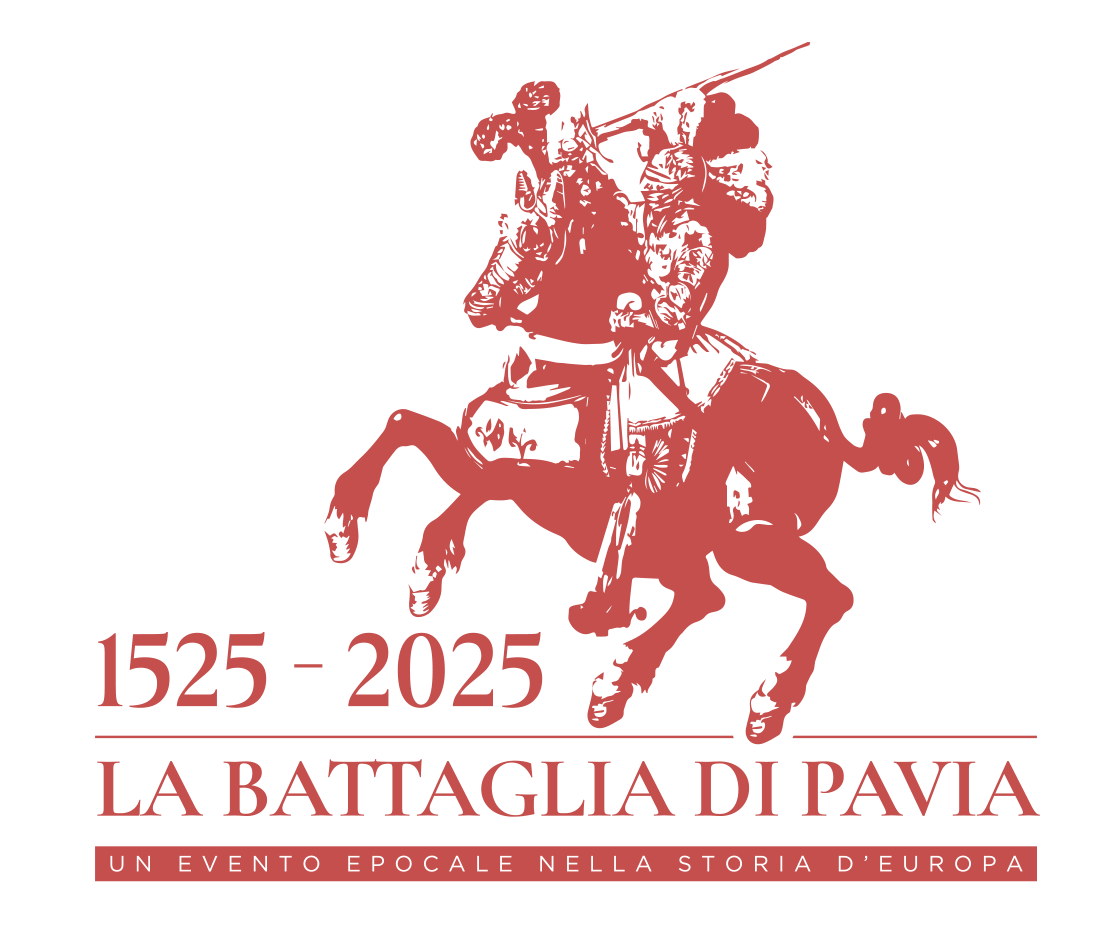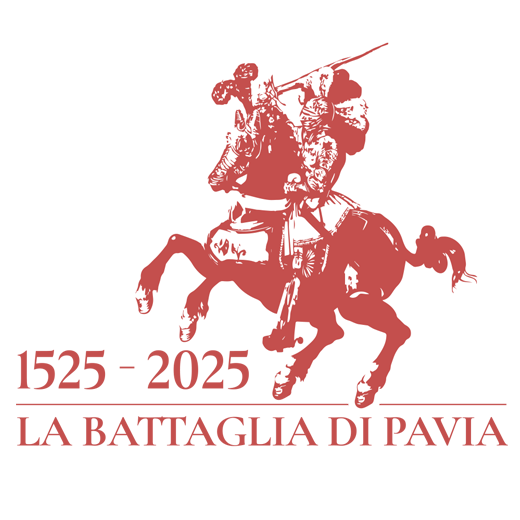Places to discover
Linked to the Battle of Pavia in 1525
Basilicas and churches of the city of Pavia, Visconti Castle, Mirabello Castle, Cascina Repentita, Certosa di Pavia and all the places linked to the events of 24 February 1525.
Of the ancient Lombard capital and of the Italian Kingdom, of the medieval city, of the Visconti and Renaissance city, Pavia has preserved the magnificent churches, the medieval towers, the Visconti castle and numerous other historic buildings. Below are the monuments and places still existing today connected to the siege of 1524-25 and the battle of Pavia.
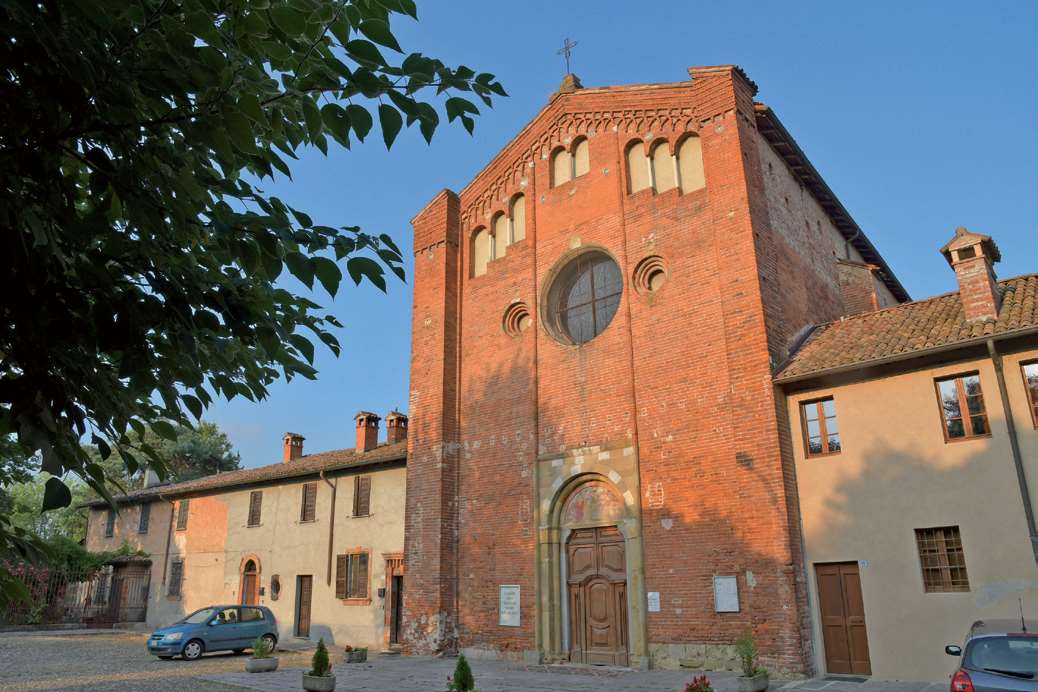
Basilica of San Lanfranco
Of Vallombrosan origin, it was built around the second decade of the 12th century; it is located west of Pavia, near the left bank of the Ticino. The current façade, much restored, dates back to the mid-13th century; the interior has a single nave with a Latin cross plan. The abbey hosted Francis I, Henry of Albret, King of Navarre and other illustrious figures at the beginning of the siege of Pavia in 1524.
How to get there
Basilica of San Lanfranco
Of Vallombrosan origin, it was built around the second decade of the 12th century; it is located west of Pavia, near the left bank of the Ticino. The current façade, much restored, dates back to the mid-13th century; the interior has a single nave with a Latin cross plan. The abbey hosted Francis I, Henry of Albret, King of Navarre and other illustrious figures at the beginning of the siege of Pavia in 1524.
How to get there

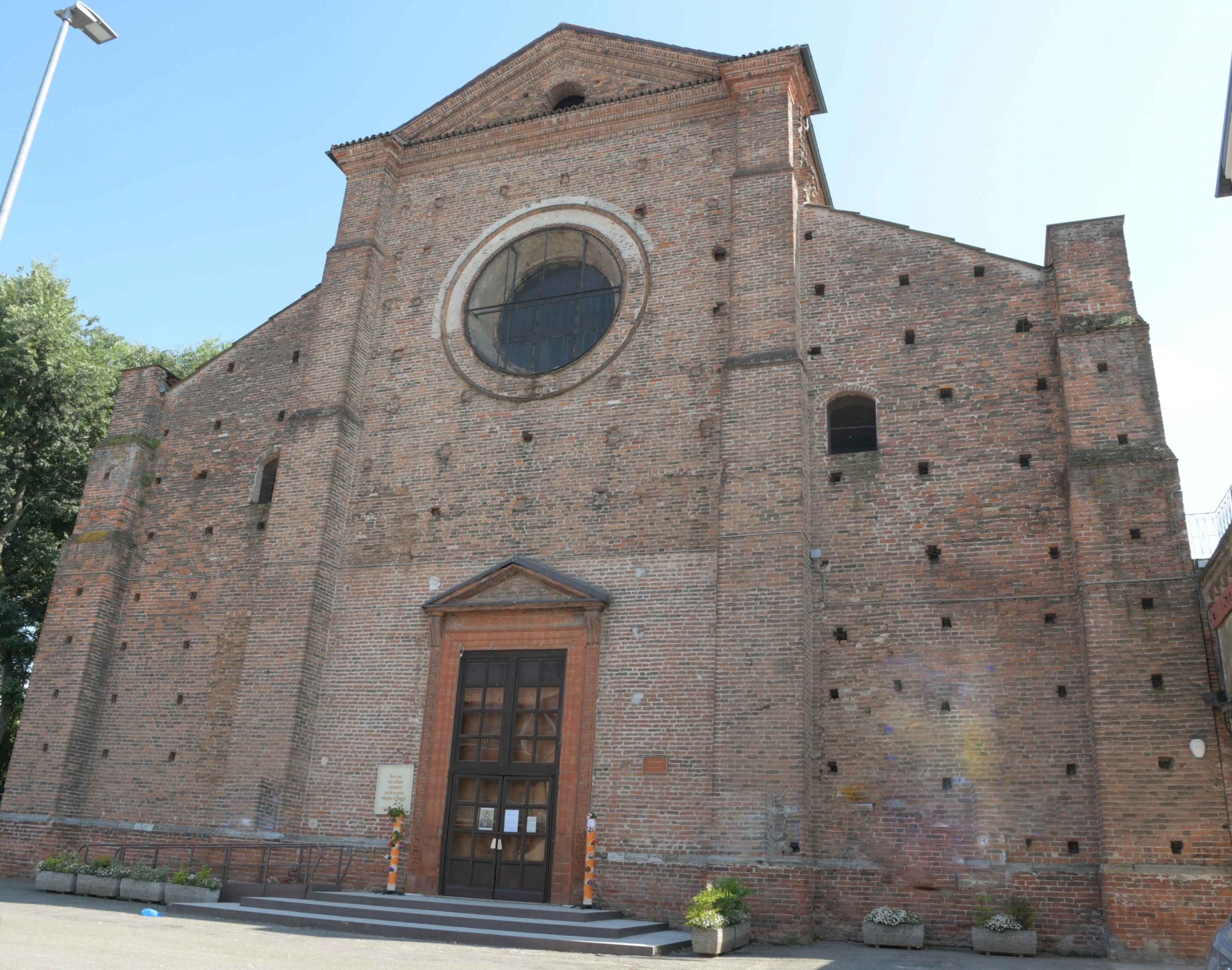
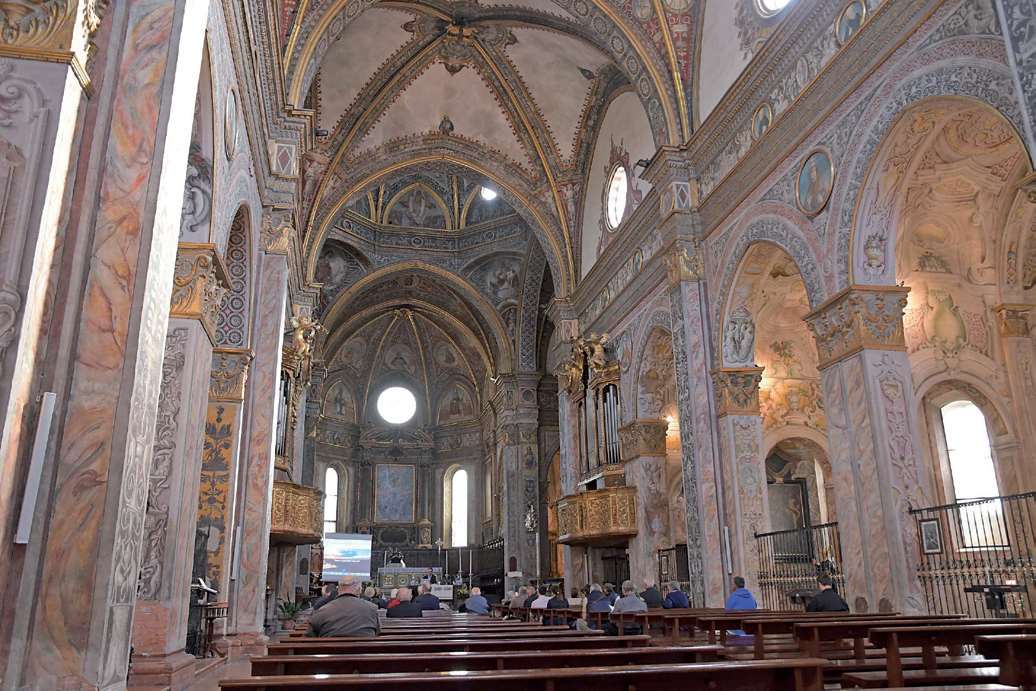
Church of San Salvatore
Of Lombard origin, the church was completely rebuilt at the end of the 15th century. In the right apse, in the background of the fresco depicting Saint Martin donating his cloak, a “bird’s eye” view of Pavia at the beginning of the 16th century is painted. Other important frescoes include the “Stories of Saint Maiolo”, attributed to Bernardino Lanzani, the “Stories of Saint Benedict” and the “Stories of Saint Anthony the Abbot”.
In this area, at the beginning of the siege, the lanzichenecchi of the Banda Nera in the pay of Francis I were camped.
How to get there


Church of San Salvatore
Of Lombard origin, the church was completely rebuilt at the end of the 15th century. In the right apse, in the background of the fresco depicting Saint Martin donating his cloak, a “bird’s eye” view of Pavia at the beginning of the 16th century is painted. Other important frescoes include the “Stories of Saint Maiolo”, attributed to Bernardino Lanzani, the “Stories of Saint Benedict” and the “Stories of Saint Anthony the Abbot”.
In this area, at the beginning of the siege, the lanzichenecchi of the Banda Nera in the pay of Francis I were camped.
How to get there
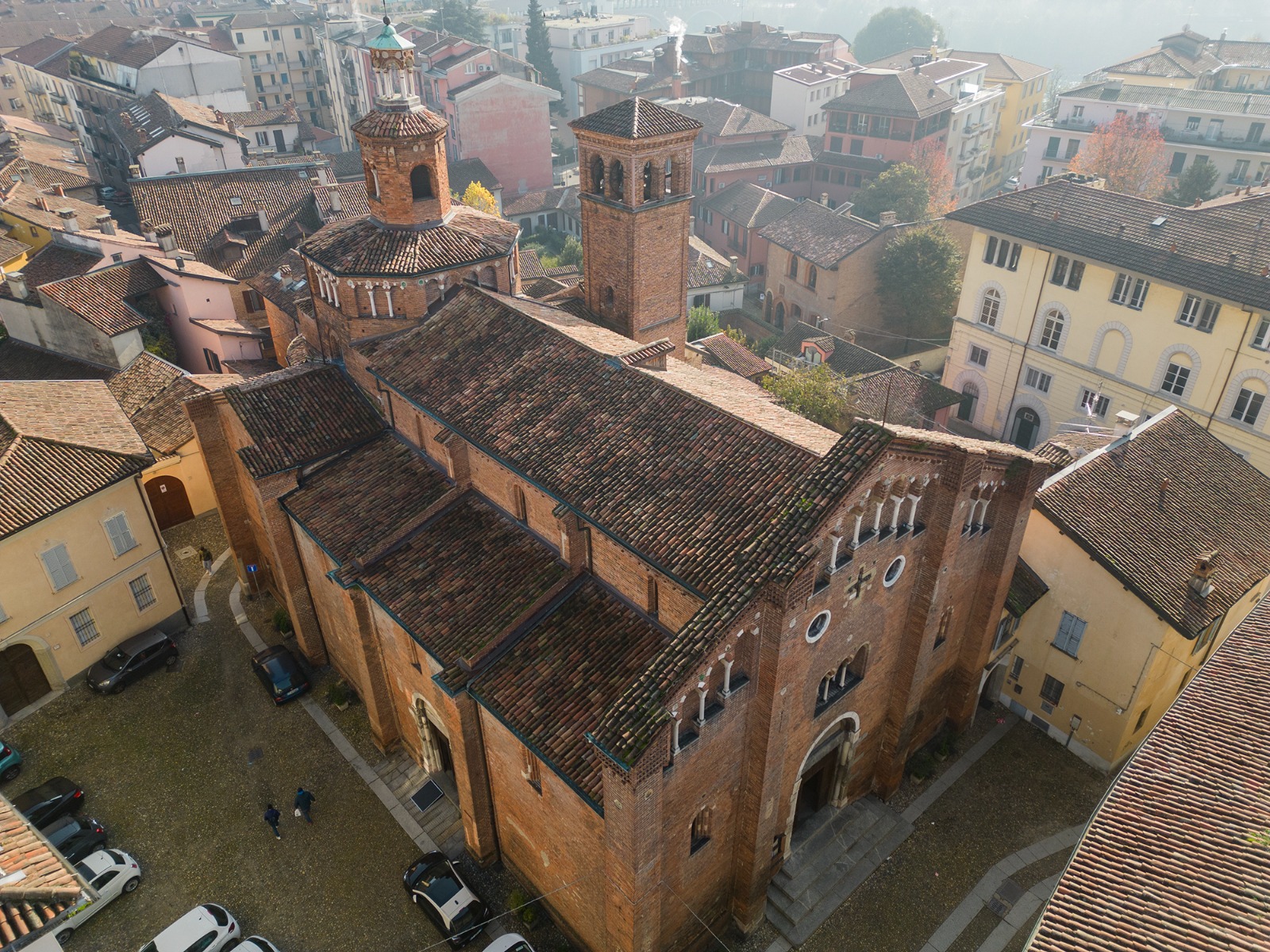
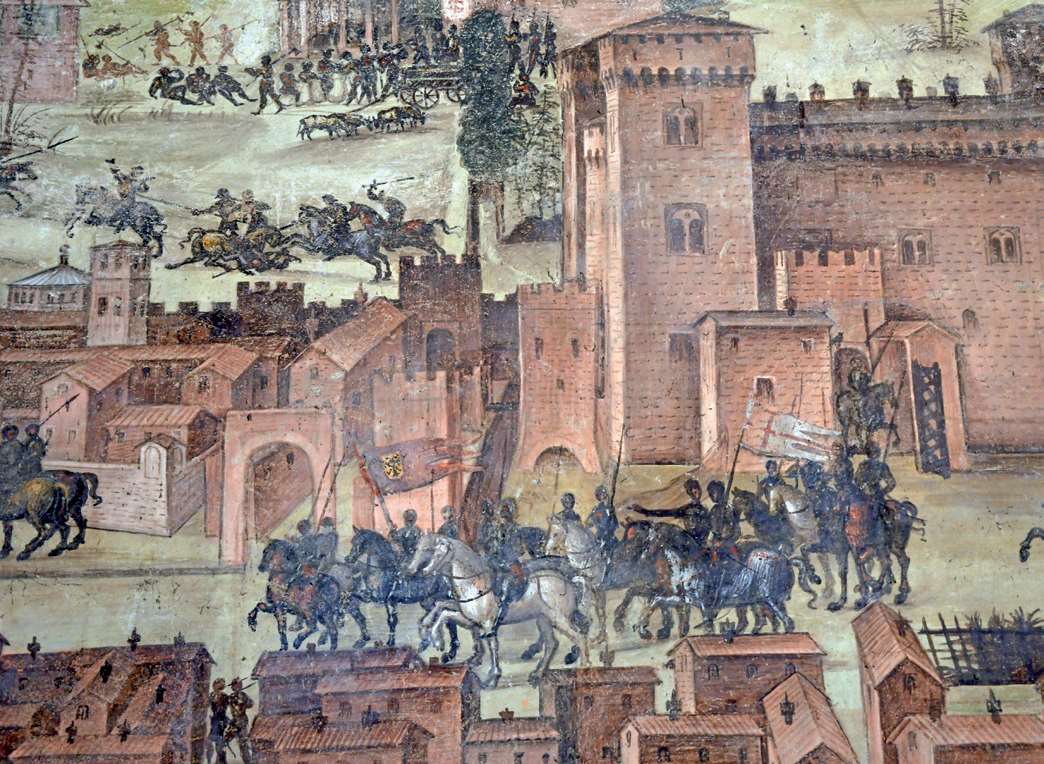
Basilica of San Teodoro
It dates back to the mid-twelfth century. In Romanesque style, it is entirely built in terracotta. Inside it preserves remarkable examples of medieval and Renaissance painting including two “Views of Pavia”, which constitute a very important historical iconographic document of the city made between 1522 and 1523, therefore shortly before the battle of 1525. Originally executed on two overlapping versions, the second, more complete view was detached and transferred to the counter-façade wall, to the left of the main entrance. The two frescoes depict the city during the siege placed by the French commanded by Odet de Foix, Viscount of Lautrec, in 1522.
How to get there
Basilica of San Teodoro
It dates back to the mid-twelfth century. In Romanesque style, it is entirely built in terracotta. Inside it preserves remarkable examples of medieval and Renaissance painting including two “Views of Pavia”, which constitute a very important historical iconographic document of the city made between 1522 and 1523, therefore shortly before the battle of 1525. Originally executed on two overlapping versions, the second, more complete view was detached and transferred to the counter-façade wall, to the left of the main entrance. The two frescoes depict the city during the siege placed by the French commanded by Odet de Foix, Viscount of Lautrec, in 1522.
How to get there


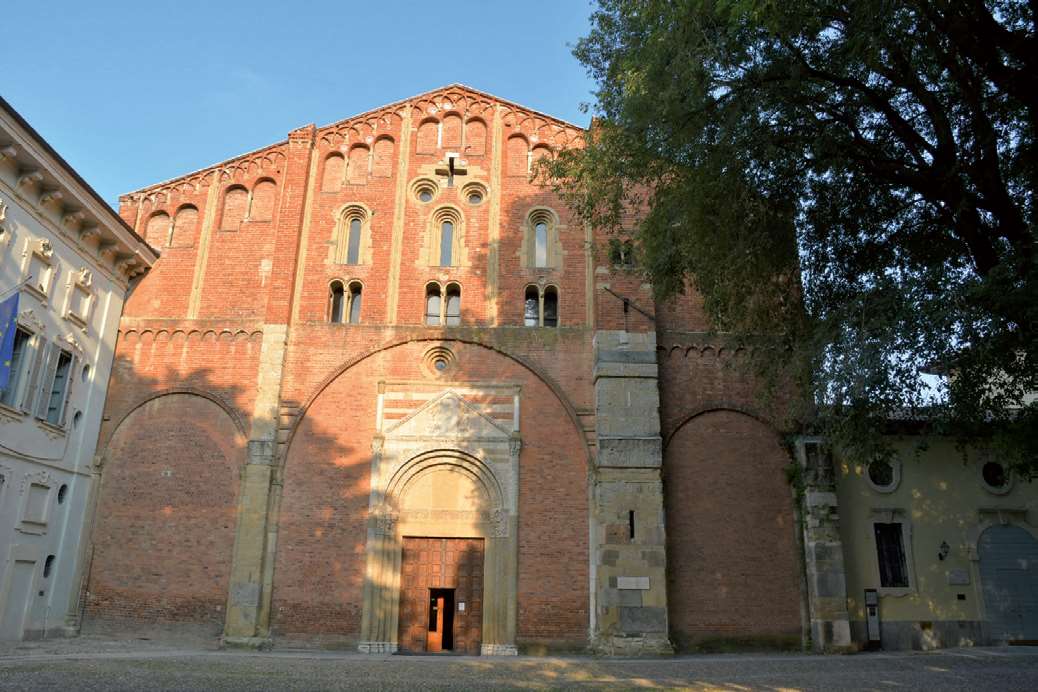
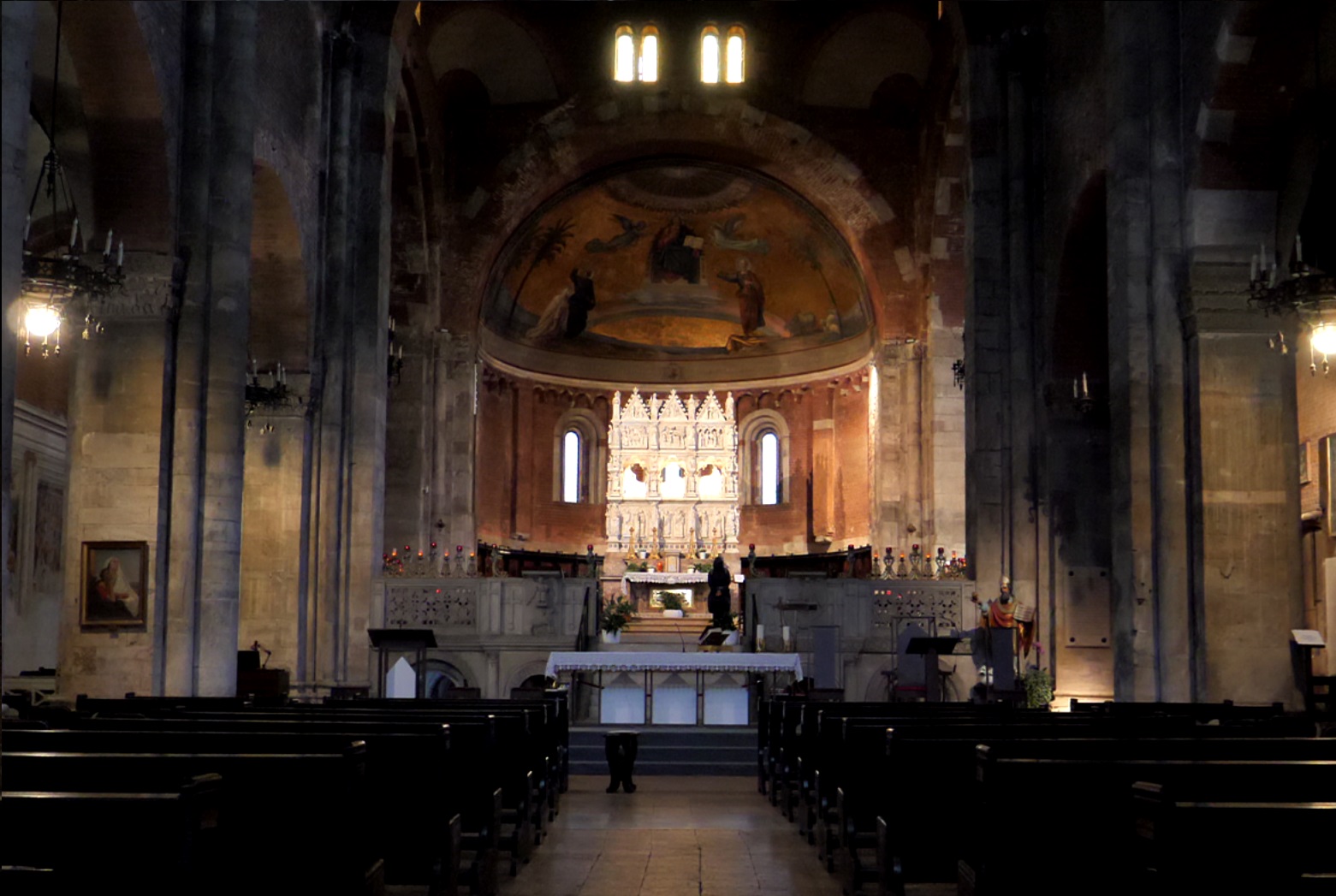
Basilica of S. Pietro in Ciel d’Oro
Consecrated in 1132, it is a masterpiece of Romanesque architecture. The church welcomed the mortal remains of some illustrious figures, both imperial and French. In addition to Eitel Frederick of Hohenzollern, the commander of the lanzichenecchi who defended Pavia, who died during the siege, Richard de La Pole, Duke of Suffolk and Francis of Lorraine, the two commanders of the Banda Nera in the French pay, who died in battle, were also buried there. These tombs have disappeared. The church preserves the remains of Saint Augustine, Severino Boezio and King Liutprand.
How to get there


Basilica of S. Pietro in Ciel d’Oro
Consecrated in 1132, it is a masterpiece of Romanesque architecture. The church welcomed the mortal remains of some illustrious figures, both imperial and French. In addition to Eitel Frederick of Hohenzollern, the commander of the lanzichenecchi who defended Pavia, who died during the siege, Richard de La Pole, Duke of Suffolk and Francis of Lorraine, the two commanders of the Banda Nera in the French pay, who died in battle, were also buried there. These tombs have disappeared. The church preserves the remains of Saint Augustine, Severino Boezio and King Liutprand.
How to get there
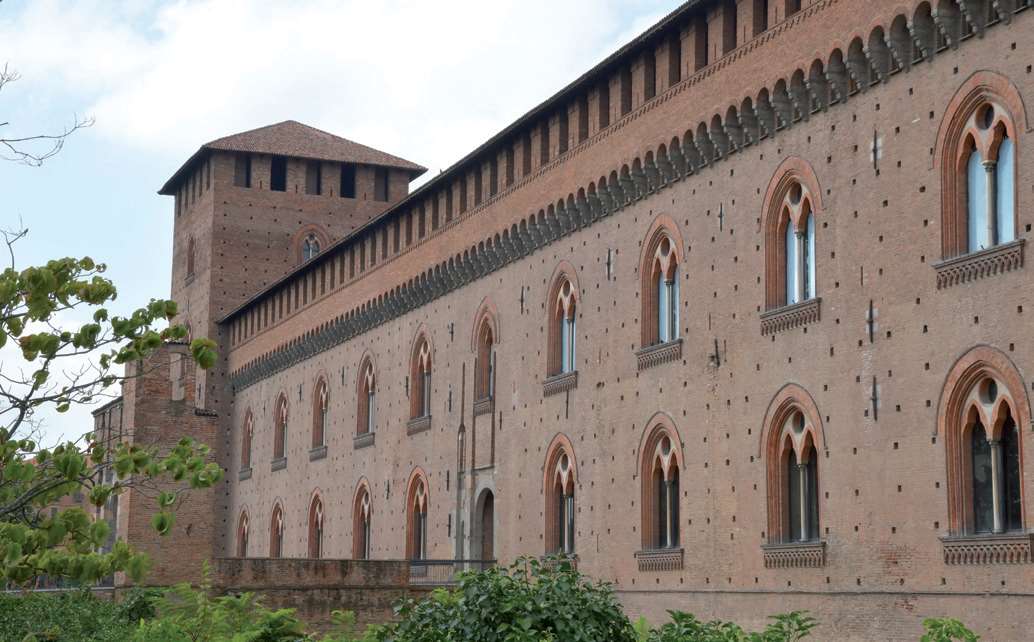
Visconti Castle
It was built by Galeazzo II Visconti in five years, from 1360 to 1365, after the conquest of Pavia. It is currently home to the Civic Museums, including galleries of paintings from various periods, archaeological sections and a museum of the Risorgimento. On the first floor there is the “Hall of the Battle of Pavia” with the exhibition of some paintings and prints and the projection on a large screen of the Flemish tapestries preserved in the Capodimonte Museum in Naples. During the sieges of 1522 and 1524-25 the Castle was the seat of the Spanish military command. The northern wing and the two corner towers were destroyed in October 1527 by the French artillery of Odet de Foix, Viscount of Lautrec, who let the city be sacked as revenge for the defeat suffered by Francis I in 1525.
How to get there
Visconti Castle
It was built by Galeazzo II Visconti in five years, from 1360 to 1365, after the conquest of Pavia. It is currently home to the Civic Museums, including galleries of paintings from various periods, archaeological sections and a museum of the Risorgimento. On the first floor there is the “Hall of the Battle of Pavia” with the exhibition of some paintings and prints and the projection on a large screen of the Flemish tapestries preserved in the Capodimonte Museum in Naples. During the sieges of 1522 and 1524-25 the Castle was the seat of the Spanish military command. The northern wing and the two corner towers were destroyed in October 1527 by the French artillery of Odet de Foix, Viscount of Lautrec, who let the city be sacked as revenge for the defeat suffered by Francis I in 1525.
How to get there

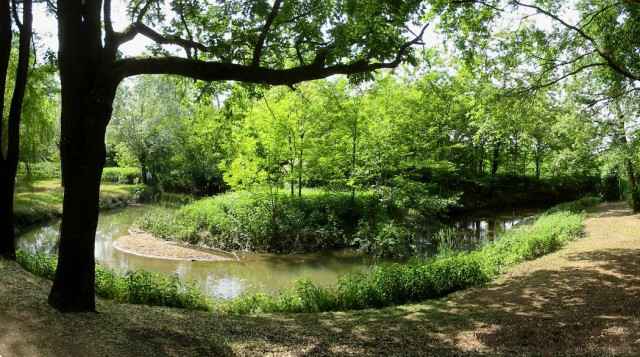
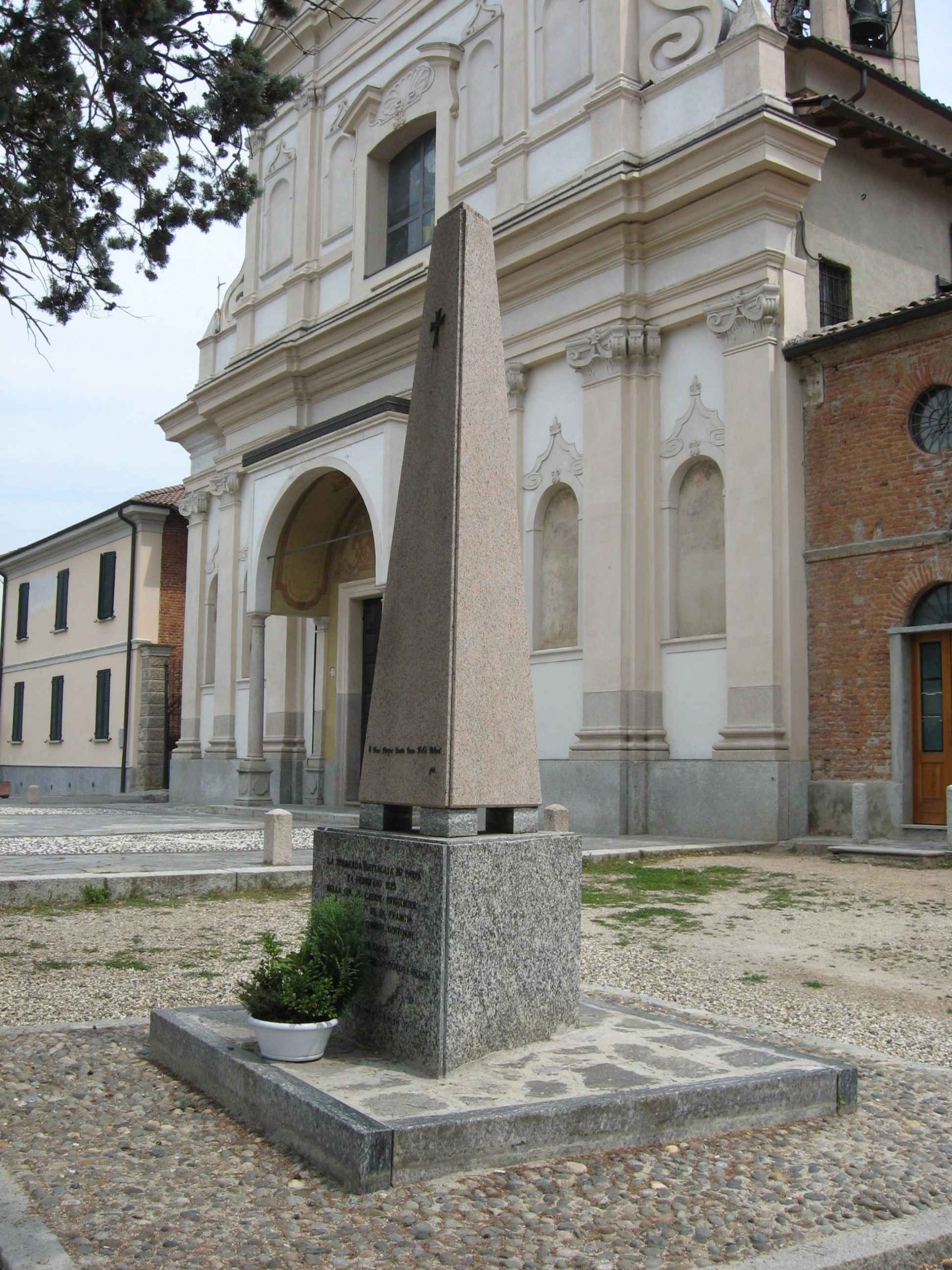
Visconti Park
To the north of the Visconti Castle, starting from the walls of Pavia and touching the Certosa, extended the large Visconti Park, the scene of the battle of 24 February 1525. A true garden of delights, its construction was begun by Galeazzo II Visconti after the construction of the Visconti Castle and completed towards the end of the 14th century by his son Gian Galeazzo. Surrounded by a high and thick wall with a perimeter of about 21 kilometres, it was divided into the Old Park and the New Park by a wall that ran from the Cantone delle Tre Miglia to Due Porte. In the external wall and in the dividing wall there were a total of twelve gates. In the Park, intended mainly for hunting, in the best times deer, fallow deer, roe deer and other abundant game lived there, finding an ideal refuge in its woods.
The Park’s land was cut by several watercourses, the most important of which, the Vernavola, ran through the entire length of the Parco Vecchio before flowing into the Ticino downstream from the city. Almost in the centre of the Parco Vecchio, on the right bank of the Vernavola, was the Mirabello castle, actually a magnificent and imposing fortified hunting lodge protected by a moat. Several small settlements, simple farmhouses, were scattered throughout the Park: Torre del Gallo, on the eastern wall of the Parco Vecchio, Cantugno, Cornaiano, the Repentita farmhouse, the Pantaleona and others.
Starting from the Torretta, on the Via Vigentina, it is possible to walk through the Park going up the Vernavola watercourse following on foot or by bicycle the “greenway della battaglia” that leads to San Genesio passing through Mirabello.
On one side of the churchyard of the church of S. Maria Assunta in Mirabello, an obelisk, erected in 1983 on the initiative of private individuals, commemorates the battle of 24 February 1525.
How to get there


Visconti Park
To the north of the Visconti Castle, starting from the walls of Pavia and touching the Certosa, extended the large Visconti Park, the scene of the battle of 24 February 1525. A true garden of delights, its construction was begun by Galeazzo II Visconti after the construction of the Visconti Castle and completed towards the end of the 14th century by his son Gian Galeazzo. Surrounded by a high and thick wall with a perimeter of about 21 kilometres, it was divided into the Old Park and the New Park by a wall that ran from the Cantone delle Tre Miglia to Due Porte. In the external wall and in the dividing wall there were a total of twelve gates. In the Park, intended mainly for hunting, in the best times deer, fallow deer, roe deer and other abundant game lived there, finding an ideal refuge in its woods.
The Park’s land was cut by several watercourses, the most important of which, the Vernavola, ran through the entire length of the Parco Vecchio before flowing into the Ticino downstream from the city. Almost in the centre of the Parco Vecchio, on the right bank of the Vernavola, was the Mirabello castle, actually a magnificent and imposing fortified hunting lodge protected by a moat. Several small settlements, simple farmhouses, were scattered throughout the Park: Torre del Gallo, on the eastern wall of the Parco Vecchio, Cantugno, Cornaiano, the Repentita farmhouse, the Pantaleona and others.
Starting from the Torretta, on the Via Vigentina, it is possible to walk through the Park going up the Vernavola watercourse following on foot or by bicycle the “greenway della battaglia” that leads to San Genesio passing through Mirabello.
On one side of the churchyard of the church of S. Maria Assunta in Mirabello, an obelisk, erected in 1983 on the initiative of private individuals, commemorates the battle of 24 February 1525.
How to get there
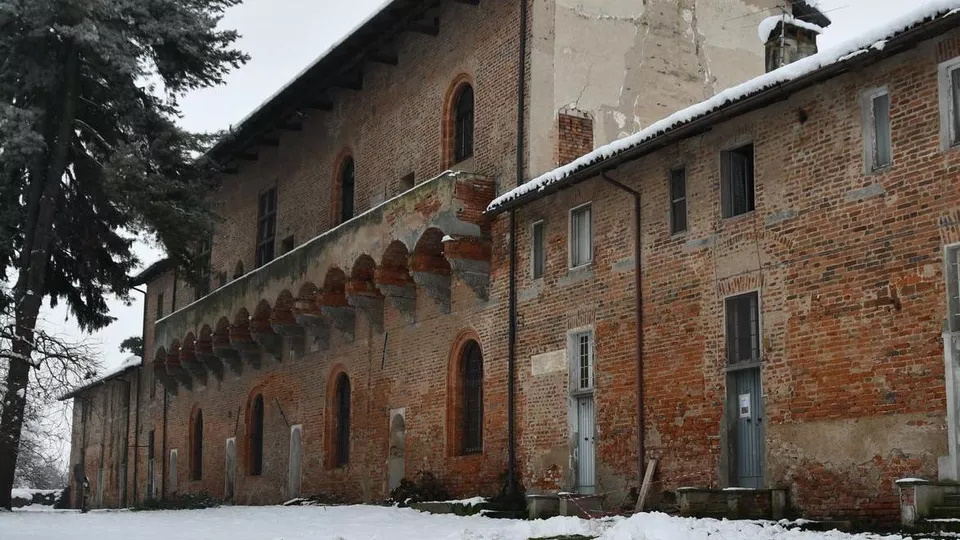
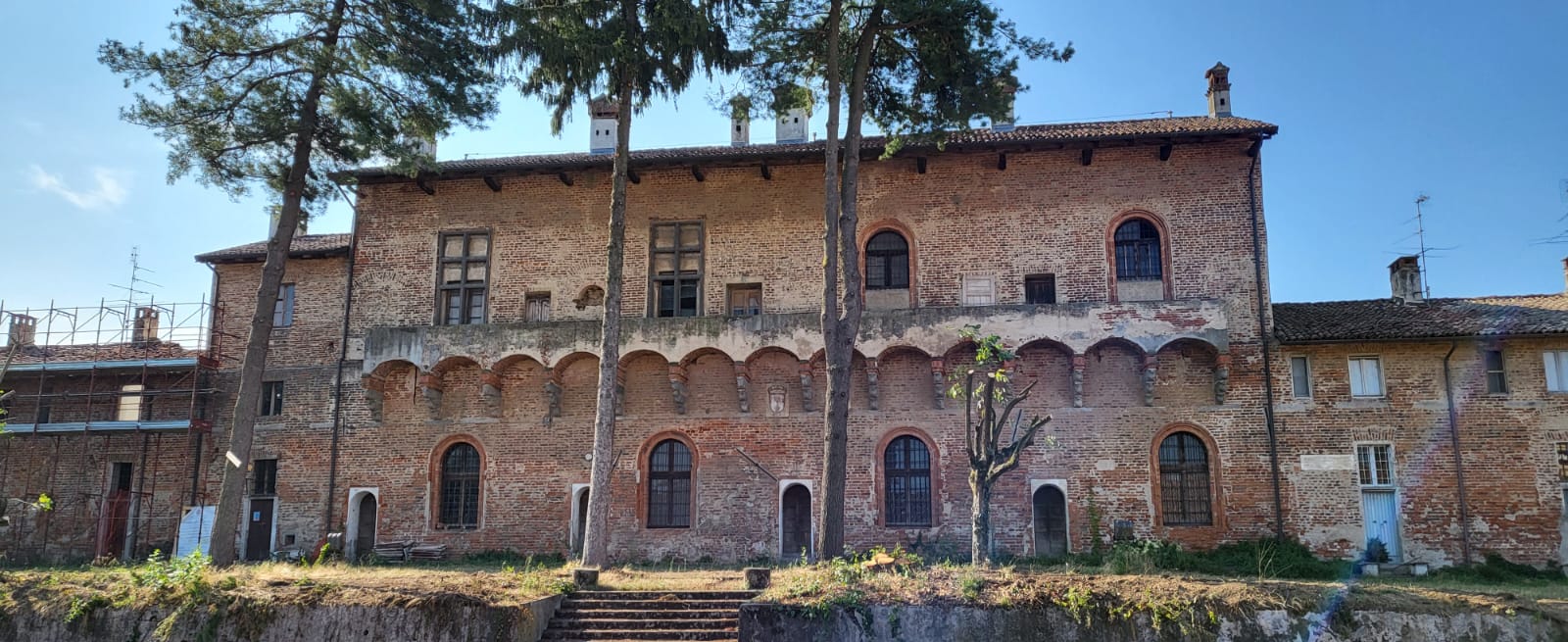
Mirabello Castle
Hunting lodge of the Visconti family, then owned by Galeazzo Sanseverino at the beginning of the 16th century. It is located in the ancient Visconti Park, on the right bank of the Vernavola. According to the most recent studies, the toponym Mirabello appears for the first time in a document from 1223, even though the original building most likely dates back to the last quarter of the 14th century, when Gian Galeazzo Visconti had a new hunting lodge built inside the Old Park, demolishing the pre-existing monastery of San Cristoforo. In 1384, the “castle” is mentioned in documents in relation to its “reparatione” but we have no idea of its original appearance. The current building dates back to the time of Filippo Maria Visconti while the moat surrounding it was equipped with three drawbridges by Galeazzo Maria Sforza in 1472. Galeazzo Sanseverino, son-in-law of Ludovico il Moro, obtained the concession of the castle of Mirabello from his father-in-law in 1487, making substantial changes and having new buildings erected. During the siege of Pavia, Francis I stayed there for a few days. Located in the rear of the French army that was encamped further south, towards Pavia, the castle was occupied by the imperial vanguard in the preliminary stages of the battle of 24 February 1525. The Castle, currently only open to visitors from the outside, can be reached not only along the “greenway of the battle”, but also by car, taking a stretch of the Vigentina state road and then, after passing the northern ring road of Pavia, continuing straight on to the Monte Maino roundabout, where you turn left for Mirabello or by following Via Olevano for its entire length and then continuing straight on to Mirabello.
How to get there
Mirabello Castle
Hunting lodge of the Visconti family, then owned by Galeazzo Sanseverino at the beginning of the 16th century. It is located in the ancient Visconti Park, on the right bank of the Vernavola. According to the most recent studies, the toponym Mirabello appears for the first time in a document from 1223, even though the original building most likely dates back to the last quarter of the 14th century, when Gian Galeazzo Visconti had a new hunting lodge built inside the Old Park, demolishing the pre-existing monastery of San Cristoforo. In 1384, the “castle” is mentioned in documents in relation to its “reparatione” but we have no idea of its original appearance. The current building dates back to the time of Filippo Maria Visconti while the moat surrounding it was equipped with three drawbridges by Galeazzo Maria Sforza in 1472. Galeazzo Sanseverino, son-in-law of Ludovico il Moro, obtained the concession of the castle of Mirabello from his father-in-law in 1487, making substantial changes and having new buildings erected. During the siege of Pavia, Francis I stayed there for a few days. Located in the rear of the French army that was encamped further south, towards Pavia, the castle was occupied by the imperial vanguard in the preliminary stages of the battle of 24 February 1525. The Castle, currently only open to visitors from the outside, can be reached not only along the “greenway of the battle”, but also by car, taking a stretch of the Vigentina state road and then, after passing the northern ring road of Pavia, continuing straight on to the Monte Maino roundabout, where you turn left for Mirabello or by following Via Olevano for its entire length and then continuing straight on to Mirabello.
How to get there


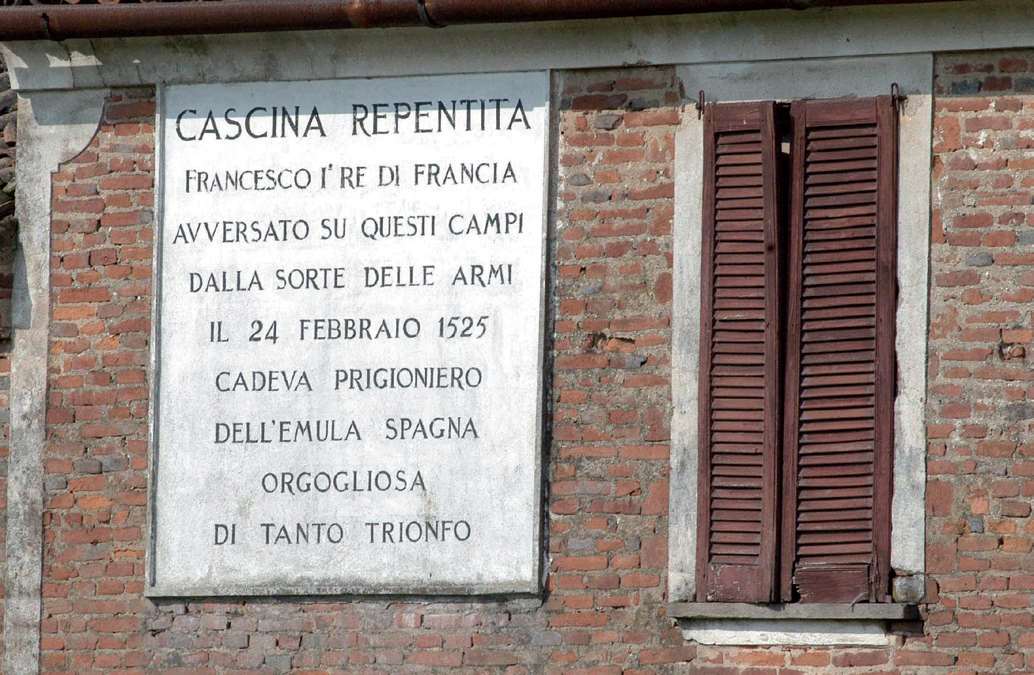
Repentita Farmhouse
(Private property)
On the left side of the road that from San Genesio and Mirabello leads to the towpath along the Naviglio and then to the state road no. 35 Milan – Pavia is the Cascina Repentita where, according to tradition, Zuppa alla Pavese was served to Francis I. An inscription on the outside wall recalls the defeat and capture of the King of France that took place in the surrounding countryside. The farmhouse can only be visited from the outside
How to get there

Repentita Farmhouse
(Private property)
On the left side of the road that from San Genesio and Mirabello leads to the towpath along the Naviglio and then to the state road no. 35 Milan – Pavia is the Cascina Repentita where, according to tradition, Zuppa alla Pavese was served to Francis I. An inscription on the outside wall recalls the defeat and capture of the King of France that took place in the surrounding countryside. The farmhouse can only be visited from the outside
How to get there
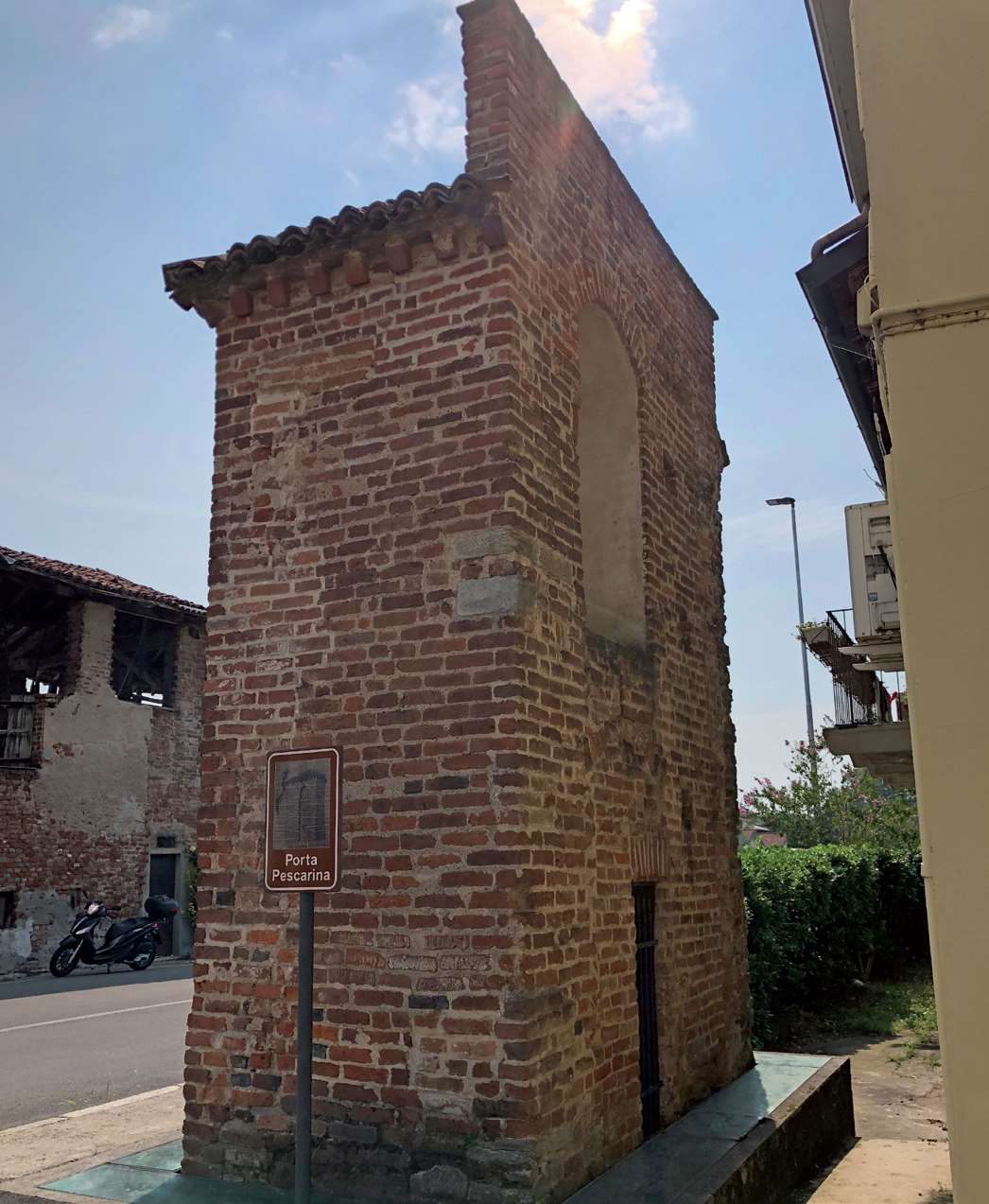
St. Genesius and Two Doors
Inhabited in ancient times leaning against the dividing wall of the two Parks. On the edge of the old stretch of the Vigentina road that crossed the town is the postern of the ancient Pescarina gate that opened in the dividing wall of the Old Park with the New.
In San Genesio, a small exhibition dedicated to the battle of Pavia is hosted at Ca’ de’ Passeri.
How to get there
Two Doors: Location in the municipality of San Genesio, on the Pavia-Lardirago road. At this point the imperials made one of the breaches in the eastern wall of the Park.
How to get there
St. Genesius and Two Doors
Inhabited in ancient times leaning against the dividing wall of the two Parks. On the edge of the old stretch of the Vigentina road that crossed the town is the postern of the ancient Pescarina gate that opened in the dividing wall of the Old Park with the New.
In San Genesio, a small exhibition dedicated to the battle of Pavia is hosted at Ca’ de’ Passeri.
How to get there
Two Doors: Location in the municipality of San Genesio, on the Pavia-Lardirago road. At this point the imperials made one of the breaches in the eastern wall of the Park.
How to get there

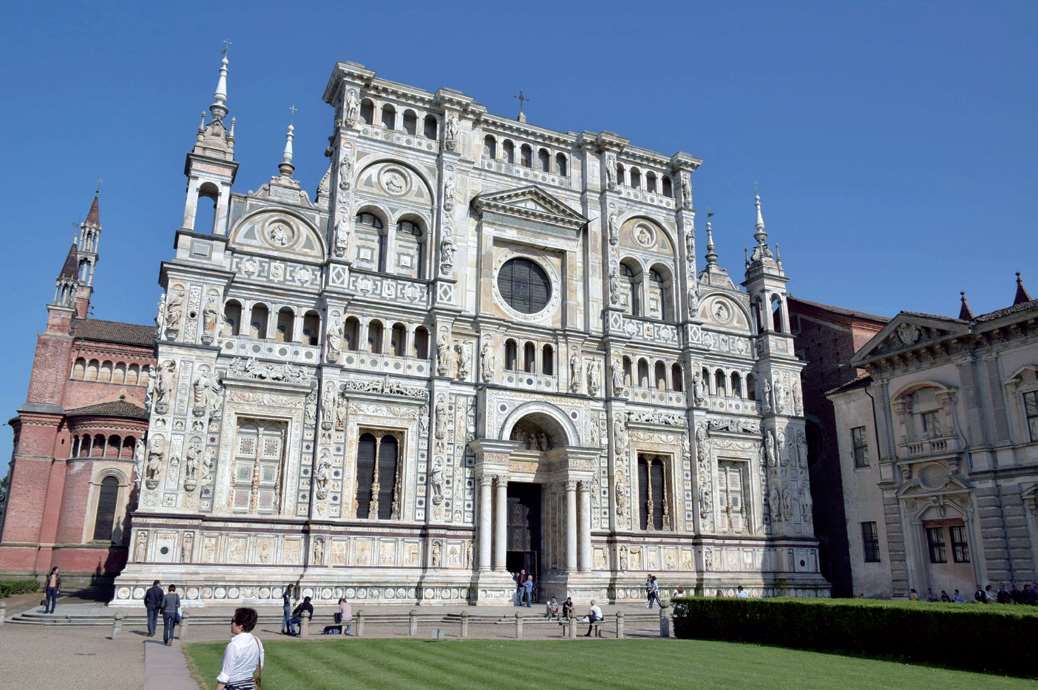
Charterhouse of Pavia
Monastery sanctuary of Santa Maria delle Grazie. It was built at the end of the 14th century by Gian Galeazzo Visconti, lord of Milan, and completed during the 15th century. Francesco I stayed there with his court for a few days before moving to the abbey of S. Lanfranco, west of Pavia. According to Francesco Taegio, Galeazzo Sanseverino was buried there after the battle of 24 February 1525. On the left side of state road no. 35, coming from Milan to Pavia, there is the ancient gate of the Torre del Mangano, which, located in the north-western corner of the Visconti Park, gave access to the New Park.
How to get there

Charterhouse of Pavia
Monastery sanctuary of Santa Maria delle Grazie. It was built at the end of the 14th century by Gian Galeazzo Visconti, lord of Milan, and completed during the 15th century. Francesco I stayed there with his court for a few days before moving to the abbey of S. Lanfranco, west of Pavia. According to Francesco Taegio, Galeazzo Sanseverino was buried there after the battle of 24 February 1525. On the left side of state road no. 35, coming from Milan to Pavia, there is the ancient gate of the Torre del Mangano, which, located in the north-western corner of the Visconti Park, gave access to the New Park.
